Depression – types, causes, and treatment
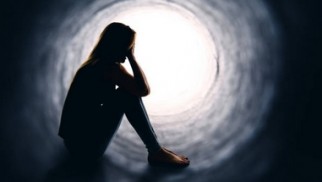
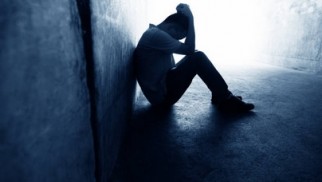
Depression causes mental distress and affects an individual’s ability to carry out everyday tasks. At its worst, depression can lead to suicide, which is the second leading cause of death in people aged 15-29, according to the WHO.
“The goal of World Mental Health Day first announced on October 10 2016 is that all people suffering from depression in all countries could seek and receive help. Particularly, we want to inform the general public about depression, its causes and dangers including suicide, and what types of assistance are available to prevent and treat this disorder. We want people with depression not to be afraid to ask for help, and their close ones and colleagues to be able to support them,” the WHO website says.
WHO has decided to pay special attention to three groups that are at particular risk: teenagers and young people, women of childbearing age (especially after childbirth), and the elderly (over 60 years).
Depression costs the world $ 1 trillion annually, according to a report by the WHO. At the same time, every dollar invested in the fight against these diseases will bring any economy $ 4 through the improved health and performance of the population, according to the WHO study.
Short information about depressive disorders
Depression is a condition distinguished by a persistent feeling of discouragement and a loss of interest in activities that are usually rewarding, and an inability to do daily activities as before the onset of the condition for at least two weeks. Besides, individuals with the disorder typically have the following symptoms:
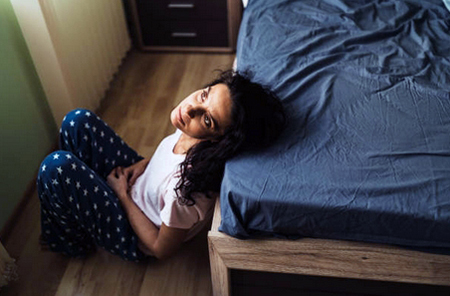
- Lack of energy,
- Decreased appetite,
- Sleepiness or insomnia,
- Anxiety,
- Decreased concentration,
- Indecision,
- Anxiety,
- Feelings of worthlessness,
- Guilt or despair,
- Thoughts of self-harm or suicide.
Depression is a mental disorder distinguished by a "depressive trine": decreased mood and lost ability to experience joy (anhedonia), thinking disorders (wrong judgments, pessimistic outlook on things and situations, and so on), motor retardation. With depression, self-esteem suffers, a person loses interest in life and previously pleasurable activities. Some individuals with the disorder may start to abuse alcohol or other psychotropic substances.
Depression is classified as an affective disorder, i.e. mood disorder. It is treatable, but currently, it is the most widespread mental disorder. It affects every tenth over the age of 40, two thirds of them are women. Among people over 65, depression is three times more common. Also, about 5% of kids and teens aged 10-16 years are subject to a variety of depressive states. The WHO reports that depression is the primary cause of morbidity and disability in young adults. The overall incidence of depression (of all varieties) in adolescence is 15 to 40%. Many studies emphasize that the higher prevalence of affective disorders at this age corresponds to the higher incidence of suicides.
Causes of depression
Depression can be the result of dramatic events, such as the loss of a loved one, job, social status. In such cases, we are talking about reactive depression. It develops as a reaction to some external event, situation. According to some theories, depression sometimes occurs when the brain is overworked as a result of stress, which can be based on both physiological and psychosocial factors.

Difficult childhood experiences can also be a risk factor for developing depression in adults: for example, child abuse can be a prerequisite for their future depression.
But if the psychological, iatrogenic, or somatic causes of depression are absent or not obvious, such depression is called endogenous, that is, as if "originating from within" (of the body, psyche). In about one third (about 35%) of cases, depression occurs autochthonously, that is, without any external influences. Structurally, such depressions are endogenous from the very beginning.
Monoamine theory links the occurrence of disorder with a deficiency of biogenic amines, namely serotonin, norepinephrine, and dopamine. Some researchers conclude that this theory is not broad enough, since it does not explain the limitations in the effectiveness of antidepressants and the slow development of their therapeutic effect.
For many people, in sunless weather or those who are in darkened rooms, depression can occur due to the lack of bright light. This type is called seasonal depression because it is most often seen in patients in the fall and winter. Treat seasonal depression with walking in sunny weather or light therapy. However, in a study conducted on a large sample (34,294 people), it was not possible to find a link between depression and the season. The disorder was not associated with the latitude in which a person lives, nor with the amount of sunlight. But this study has important drawbacks - in particular, the survey of these 34,294 people was conducted by telephone, which makes it impossible to diagnose the presence or absence of clinical depression in respondents.
Depression can result from the side effects of many drugs (e.g., levodopa, corticosteroids, benzodiazepines) - so-called iatrogenic or pharmacogenic depression. Most often, such depression quickly goes away on its own or heals after the withdrawal of the corresponding drug.
Neuroleptic depression (arising from the use of antipsychotics) can last from several months to 1.5 years.
Sometimes, depression occurs due to the abuse of sedatives or hypnotics, alcohol, cocaine, and other psychostimulants, opiates.
Depression can also be somatic or, more precisely, somatogenic, manifest as a result of somatic diseases (for example, Alzheimer’s disease, atherosclerosis of the arteries of the brain, traumatic brain injury, or even the common flu).
The main types of depression
Specialists distinguish between unipolar depression, in which mood remains within one, reduced, "pole", and bipolar depression, which is an integral part of bipolar affective disorder, which are interspersed with manic, hypomanic, or mixed affective episodes. Also, depressive episodes of mild severity can occur with cyclothymia (mild bipolar disorder).
The following forms of unipolar depression can be distinguished (according to DSM-IV):
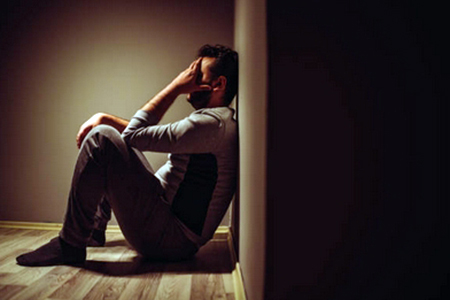
- Major depressive disorder (clinical depression).
- A type of major depression is resistant depression, in which there is no or insufficient clinical effect during two consecutive courses (3-4 weeks) of antidepressant treatment.
- Minor depression meets not all clinical depression criteria but has at least two main diagnostic symptoms persistent for at least 2 weeks.
- Atypical depression is a form of disorder in which, along with the typical symptoms there are specific signs such as enhanced appetite, weight gain, excessive sleepiness, and so-called "emotional reactivity."
- Postnatal depression is a form of the disorder that develops immediately after childbirth.
- Recurrent brief depression (RBD) differs from clinical depression mainly in duration. Individuals with RBD experience depressive episodes approximately once a month, with occasional episodes lasting less than 2 weeks, and usually less than two-three days. For RBD to be diagnosed, the episodes must be observed for at least one year and, if the patient is a woman, regardless of the menstrual cycle.
- Dysthymia is a mild chronic mood disorder when a person complains of an almost daily bad mood for at least two years. Symptoms are not as severe as those of clinical depression, although people with dysthymia also experience recurrent episodes of clinical depression (sometimes referred to as "double depression").
The course of the disease
At first, mild signals are felt in the form of sleep problems, irritability, and refusal to perform normal duties. If these symptoms intensify within two weeks, then usually this indicates the onset of the disease or its relapse, although it will fully manifest itself in two months, or even later. One-time attacks happen. Without treatment, depression can lead to attempted suicide, alienation from others, refusal to perform most vital functions, and family breakdown.

Depression can be caused and accompanied by other mental disorders, in particular neurosis.
Depression was found to be associated with a decrease in telomere length, which is also associated with aging processes in the body.
Also, according to a recent study, it turned out that depression affects wound healing. In depressed patients, wounds are more difficult to heal and are more likely to be readmitted to the hospital. Moreover, the more severe the form of the disorder, the worse the result. Lead Researcher Philip Brittheon believes that special attention should be paid to the psychological state of the patient prior to surgery so that the patient recovers as soon as possible.
The average duration of the disease is 6 to 8 months, but in some individuals, depression becomes chronic. Chronic depression lasts more than two years.
Resistant depression is such depression in which, during two consecutive courses of adequate and long-term monotherapy with pharmacologically different drugs, the absence or insufficiency of the clinical effect is noted (reduction of symptoms according to the Hamilton scale or the Montgomery scale is less than 50%).
Treatment of depression
Not every patient requires hospitalization; treatment is often carried out on an outpatient basis. The main areas of therapy for depression are pharmacotherapy (antidepressants, for instance, Paroxetine, antipsychotics, for instance, Olanzapine, etc.) for depression and accompanying conditions (anxiety, neurosis, mania in bipolar depression, etc.), psychotherapy, and social therapy.
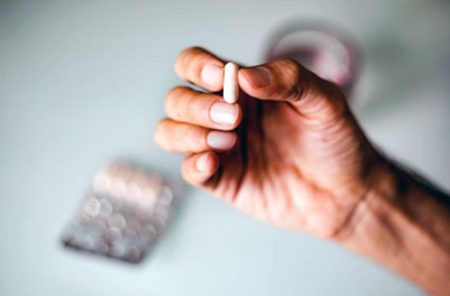
The most important criterion for successful antidepressant therapy is the correct clinical diagnosis: the approach to treating depression should depend on its cause. So, with somatogenic depressions, it is necessary first of all to treat a somatic (physical) disease and only secondarily to symptomatic drug therapy and psychotherapy.
In endogenous depression, drug therapy is the main method, and psychotherapy is used in addition to it; in psychogenic (neurotic and reactive) depression, psychotherapy is no less important than drug therapy.
It should be noted that even in cases where somatic pathology is not the cause of a depressive disorder, the presence of certain somatic diseases (for example, subclinical hypothyroidism, Cushing's disease, polycystic ovary syndrome, coronary heart disease, oncological pathology, chronic infections, vitamin or elemental deficiency, and others) in depressed patients can often complicate the course of depression and lead to the emergence of resistance. In these cases, in addition to therapy with psychopharmacological drugs, it is necessary to treat a somatic disease, which makes it possible to overcome resistance to therapy.
As Professor Dr. Paul Kidwell, an expert on mental disorders at Cardiff University, warns, antidepressants are powerless to combat depression if the person does not abandon the lifestyle that causes it.
Post is made based on the information provided by: Elizabeth Agrer, clinical pshychiatrist, Copenhagen, Denmark
(Updated at Apr 13 / 2024)
Zyprexa articles:
Some of the trademarks used in this Web Site appear for identification purposes only.
All orders are reviewed by a licensed physician and pharmacist before being dispensed and shipped.
The statements contained herein are not intended to diagnose, treat, cure or prevent disease. The statements are for informational purposes only and is it not meant to replace the services or recommendations of a physician or qualified health care practitioner. If you have questions about the drugs you are taking, check with your doctor, nurse, or pharmacist.